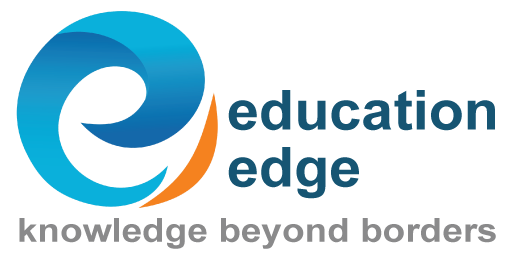Office Read 3 – Program Strategy Alignment
Objective of the office Read – This artifact is a short summary of respective content that will be covered in class. The summary is a great tool to review content however by no means replaces the SPM V4. Standard for Program Management remains the authoritative source of preparation for the PMP Exam
Goal of this domain: IMP – Program Strategy Alignment is the performance domain that identifies program outputs and outcomes to provide benefits aligned with the organization’s strategic goals and objectives.
Weightage on the PgMP Exam: 15% (25 Questions)
3.0 PROGRAM STRATEGY ALIGNMENT
Quick Tip – Consider Program Strategy Alignment as the first few steps taken before a Program can be initiated. It is at this time justification of a program via a business case takes place which may or may not get approved by Portfolio Review Board. Vison and Mission statements along with Values are established. Goals in the form of outcome and benefits are also listed out at a very high level along with Organisational Strategy. Program Charter along with a very high level Roadmap is established and presented to the Governance Board for approval.
Purpose of this Domain: Program Strategy Alignment is the performance domain that identifies program outputs and outcomes to provide benefits aligned with the organization’s strategic goals and objectives.
This domain is a simpler domain in the exam and covers following elements:
3.1 Program Business Case
3.2 Program Charter
3.3 Program Roadmap
3.4 Environmental Assessments
3.5 Program Risk Management Strategy
When an organization develops its strategy, there is typically an initial evaluation and selection process that may be formal or informal to help the organization determine which initiatives to approve, deny, or defer as part of the portfolio management practice of the organization.
Mature organisations are more likely to have a formalized process for program selection such as a portfolio review board or a program steering committee. Either may issue Program Charter that defines the strategic objectives and benefits a particular program is expected to deliver.
Program Strategy Alignment is initiated with following steps:
1. development of a program business case. A program business case is a documented economic feasibility study used to establish validity of the benefits to be delivered by a program; it justifies the need for a program by defining how a program’s expected outcomes would support the organization’s strategic goals and objectives. As the documented economic feasibility study is used to establish validity of the benefits to be delivered by a program, the business case is then further used as an input to the program charter and subsequently the program roadmap. These three documents are established as part of program formulation activities
2. Upon Approval of Business Case, a Program Charter is established.
Very Important: The program charter is a document issued by a sponsor that authorizes the program management team to use organizational resources to execute the program and links the program to the organization’s strategic objectives. It defines the scope and purpose of a proposed program presented to governance to obtain approval, funding, and authorization. This program charter confirms the commitment of organizational resources to determine if a program is the most appropriate approach for achieving these objectives and triggers the program definition phase.
During program definition, the program manager collaborates with key sponsors and stakeholders to develop the program’s business case. This business case is developed to assess the program’s investment against the intended benefits. The business case can be basic and high-level or detailed and comprehensive. It usually describes key parameters that can be used to assess the objectives and constraints for the intended program.
IMP: One critical component of Business Case is identification of business need in the form of Problem and Opportunity statement.
Apart from the Business Need, the business case may include the following:
1. Program outcomes, 2. approved concept, 3. issues, 4. high-level risk and opportunity assessment, 5. key assumptions, 6. business and operational impact, 7. cost benefit analysis (or in other words justification) , 8. alternative solutions, 7. financial analysis, 8. intrinsic and extrinsic benefits, 9. market demands or barriers, 10. potential profits, 11.social needs, 12. environmental influences, 13. legal implications, 14. time to market, 15. constraints, and 16. the extent to which the program aligns with the organization’s strategic plan, 17. Success Criteria
2. The business case describes the intent and authority behind the drivers of the program and underlying philosophy of the business need.
3. The business case also serves as a formal declaration of the value that the program is expected to deliver and a justification for the resources that will be expended to deliver it.
The business case is required as one of the document deliverables before the program can be formally chartered and may be considered as the primary justification document for an investment decision.
3.2 PROGRAM CHARTER
To develop a Program Charter, approval of Business Case should be in place.
The program steering authorizes the program by means of the program charter. Derived from the business case, the program charter is a document that assigns and authorizes a program manager and defines the scope and purpose of a proposed program presented to governance to obtain approval, funding, and authorization.
Please note: the underlying concept above is same a PMBOK 6 Development of Project Charter.
Key elements of a program charter consist of the 1. program scope, 2. assumptions, 3. constraints,4. high-level risks, 5. high-level benefits, 6. goals and objectives, 7. success factors, 8. Timing (high level roadmap), 9. key stakeholders, and 10.other provisions that tie the program to the business case, thereby enabling program strategy alignment.
Critical concepts about Program Charter for the exam (Memorize the ones listed below) :
1. Program charter formally expresses the organization’s vision, mission, and benefits expected to be produced by the program;
2. Defines program-specific goals and objectives in alignment with the organization’s strategic plan in support of the business case.
3. The program charter also provides the program manager with the authority for leading other subsidiary programs, projects, and related activities to be initiated, in addition to the framework by which these program components will be managed and monitored during the course of the program.
4. The program charter is one of the document deliverables that will be used to measure program success.
5. It should include the metrics for success, a method for measurement, and a clear definition of success.
Very Important: Program Roadmap sometimes also referred to as high level roadmap maybe included as part of the Charter.
3.3 PROGRAM ROADMAP
On my PgMP Exam, there were quite a few questions from this section. These are all easy picks from exam standpoint, so pay close attention to this section. Everything below is an scenario based exam question.
1. The program roadmap is a chronological representation of a program’s intended direction, graphically depicting dependencies between major milestones and decision points, which reflects the linkage between the business strategy and the program work.
2. Program roadmap may look similar to a project schedule, the roadmap instead outlines major program events for the purposes of planning and the development of more detailed schedules.
3. The program roadmap also reflects the pace at which benefits are realized and serves as a basis for transition and integration of new capabilities.
4. The program roadmap can be a valuable tool for managing the organization of a program and for assessing a program’s progress toward achieving its expected benefits.
5. Helps in effective governance of the program, the program roadmap can be used to show how benefits are delivered within major stages or milestones; however, it may include the component details, their durations, and contributions to benefits.
6. A roadmap is an effective way to communicate the overarching plan and benefits to stakeholders to build and maintain advocacy.
3.4 ENVIRONMENTAL ASSESSMENTS
There are often internal or external influences to the program that have a significant impact on a program’s success. Influences from outside the program may be internal to the larger organization, or may come from sources external to the organization. Program managers should identify these influences and take them into account when managing the program in order to ensure ongoing stakeholder alignment, the program’s continued alignment with the organization’s strategic goals and objectives, and overall program success.
3.4.1 ENTERPRISE ENVIRONMENTAL FACTORS (these remain same as PMBOK 6).
Think about environmental factors as all those factors influence your organization as whole. As program manager we must adjust our programs as and when changes to environmental factors take place.
Enterprise environmental factors refer to conditions, not under the immediate control of the team, that influence, constrain, or direct the program.
Strategic goals change, however, in response to environmental factors. When this occurs, a change in the direction of the organization may cause the program to be misaligned with the organization’s revised strategic plan. In this case, the program may be changed, put on hold, or canceled regardless of how well it was performing.
Environmental factors may include but are not limited to:
Business environment; Market; Funding; Resources; Industry; Health, safety, and environment; Economy; Cultural diversity; Geographic diversity; Regulatory; Legislative; Growth; Supply base; Technology; Political influence; Audit; New business processes, standards, and practices; and Discoveries and inventions.
Program Managers conduct environment analysis using various techniques listed below to monitor any changes to the environment in which the program is conducted. Below are the various forms of analysis that may be used to assess the validity of a program’s business case and program management plan.
3.4.2.1 COMPARATIVE ADVANTAGE ANALYSIS
1. When conducting environmental analysis for a strategic initiative and/or business case, it is important to consider that competing efforts may reside within or external to the organization.
2. A typical business case includes analysis and comparison against real or hypothetical alternative scenarios.
3. Where appropriate, comparative advantage analysis may also include what-if analyses to illustrate how the program’s objectives and intended benefits could be achieved by other means.
3.4.2.2 FEASIBILITY STUDIES
Using the business case, organizational goals, and other existing initiatives as a base, this process assesses the feasibility of the program within the organization’s financial, sourcing, complexity, and constraint profile.
Imp: This analysis contributes to the body of information that decision makers require to approve or deny the program proposal.
3.4.2.3 SWOT ANALYSIS
1. An analysis of the strengths, weaknesses, opportunities, and threats (SWOT) faced by a program provides information for optimizing the program charter and program management plan.
2. The SWOT analysis, in particular the analysis of weaknesses and threats, may be a valuable input to the development of the program risk management strategy.
3. SWOT analysis may also form part of the feasibility study as well as the business case.
3.4.2.4 ASSUMPTIONS ANALYSIS
1. Assumptions are factors that, for planning purposes, are considered true, real, or certain.
2. Identified initially during business case development, assumptions affect all aspects of the program and are part of the progressive elaboration of the program.
3. Program managers regularly identify and document assumptions as part of their planning process.
Golden rule: continue to validate assumption
3.4.2.5 HISTORICAL INFORMATION ANALYSIS (this info can be used during the program definition phase)
1. Previously completed programs and completed phases of active programs may be a source of lessons learned and best practices for new programs
2. Historical information includes artifacts, metrics, risks, and estimations from previous programs, projects, and ongoing operations that may be relevant to the current program.
3. Historical information describing the successes, failures, and lessons learned is particularly important during program definition.
3.5 PROGRAM RISK MANAGEMENT STRATEGY
3.5.1 RISK MANAGEMENT FOR STRATEGY ALIGNMENT
Strategy alignment comprises the alignment of the program roadmap and its supported objectives to organizational strategy. This involves having a risk management strategy that ensures effective management of any risk that can cause the program to be out of alignment with organizational strategy. Such a risk management strategy includes defining program risk thresholds, performing the initial program risk assessment, and developing a high-level program risk response strategy, as well as determining how risks will be communicated to strategic levels of the organization.
3.5.2 PROGRAM RISK THRESHOLDS
Risk threshold is the measure of the degree of acceptable variation around a program objective that reflects the risk appetite of the organization and program stakeholders.
Examples of program risk thresholds include:
· Minimum level of risk exposure for a risk to be included in the risk register,
· Qualitative (high, medium, low, etc.) or quantitative (numerical) definitions of risk rating, and
· Maximum level of risk exposure that can be managed within the program (beyond which an escalation is triggered).
Establishing program risk thresholds is an integral step in linking program risk management to strategy alignment and therefore should be done as part of early planning.
Program Governance may be responsible for ensuring that program risk thresholds are established and observed in the program.
3.5.3 INITIAL PROGRAM RISK ASSESSMENT
While program risk management is conducted throughout the life of the program, the initial program risk assessment, prepared during program definition, offers a unique opportunity to identify risks to organizational strategy alignment.
It enables risk to be considered when developing the program roadmap and when examining environmental factors. As such, it is critical that the initial program risk assessment identifies any risk to strategy alignment, which includes but is not limited to any uncertain events or conditions that, if they occur, could lead to:
· Program objectives not supportive of organizational objectives,
· Program roadmap not aligned with organizational roadmap,
· Program roadmap not supportive of portfolio roadmaps,
· Program objective not supportive of portfolio objectives, and
· Program resource requirements out of sync with organizational capacity and capability.
Once the initial program risk assessment is performed, a risk response strategy is developed to complete the program risk management strategy.
3.5.4 PROGRAM RISK RESPONSE STRATEGY
Program risk response strategy combines the elements of the risk thresholds and the initial risk assessment into a plan for how program risks will be managed effectively and consistently throughout the life of the program. For each identified risk, the risk thresholds can be used to identify the specific response strategy based on a number of rating criteria.
A robust program risk management strategy comprises a specific risk response strategy for each of the risk rating levels that have been developed to reflect the program’s risk thresholds.
Once established, the program risk management strategy drives consistency and effectiveness in program risk management activities throughout the program as part of program integration and supporting activities. Risk management strategy enables the program to communicate and manage program risks consistently throughout the course of the program performance as part of governance.







